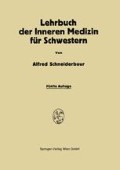Zusammenfassung
Der Stuhl zeigt nach der Konsistenz feste oder geformte, dickbreiige, dünnbreiige oder wässerige Beschaffenheit. Bei vorwiegend animalischer Kost ist der Stuhl wurstförmig, bei überwiegend vegetarischer Lebensweise kommt es zu dickbreiigen Stuhlentleerungen. Der feste Stuhl kann zuweilen eine „Bleistiftform“ bei Stenosen oder Spasmen des Dickdarmes oder sogenannte „Schafkotform“ annehmen. In letzterem Falle werden harte, haselnußgroße, rundliche Kotballen abgesetzt. Dünnbreiige und wässerige Stühle weisen auf einen krankhaften Darmzustand hin.
Access this chapter
Tax calculation will be finalised at checkout
Purchases are for personal use only
Author information
Authors and Affiliations
Rights and permissions
Copyright information
© 1961 Springer-Verlag Wien
About this chapter
Cite this chapter
Schneiderbaur, A. (1961). Stuhl. In: Lehrbuch der Inneren Mediƶin für Schwestern. Springer, Vienna. https://doi.org/10.1007/978-3-7091-3655-3_33
Download citation
DOI: https://doi.org/10.1007/978-3-7091-3655-3_33
Publisher Name: Springer, Vienna
Print ISBN: 978-3-7091-3656-0
Online ISBN: 978-3-7091-3655-3
eBook Packages: Springer Book Archive

